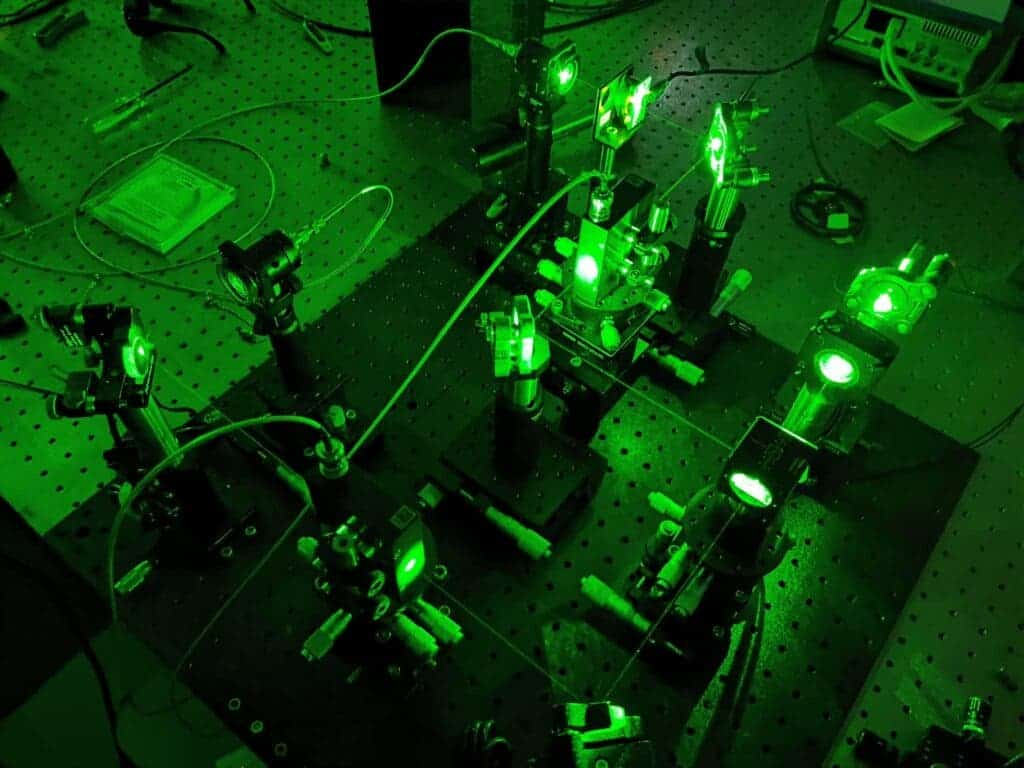
Researchers at Northwestern University have devised a high-resolution holographic camera that images objects outside its line of sight, revealing objects hidden behind corners, as well as those obstructed by barriers such as a deer behind a forest line. The camera can also see through the fog and even the human skin, which would make it a fantastic new medical imaging tool on par with MRI machines and CT scanners.
This impressive new imaging method, known as synthetic wavelength holography, works by reconstructing the path a beam of light takes as it scatters onto various objects, bouncing off surfaces until the beam makes its way back to the source where it hits a detector. An algorithm traces the path of the scattered light, making it is possible to see the world from the perspective of a remote surface, even if it’s behind the camera’s line of sight.
“If you have ever tried to shine a flashlight through your hand, then you have experienced this phenomenon,” said Florian Willomitzer, first author of the study, explaining how light scattering works. “You see a bright spot on the other side of your hand, but, theoretically, there should be a shadow cast by your bones, revealing the bones’ structure. Instead, the light that passes the bones gets scattered within the tissue in all directions, completely blurring out the shadow image.”
The new technology is a type of non-line-of-sight (NLoS) imaging. Researchers at Stanford University recently presented another impressive demonstration of NLoS that images moving objects inside a room using a single laser beam fired through a keyhole.
But compared to other NLoS technologies, this new method takes things to a whole new level, rapidly capturing full-field images at high resolution with submillimeter precision.
The key to imaging obstructed objects is to intercept the scattered light and measure its time of travel with precision. Typically, you’d need a cumbersome apparatus consisting of very fast detectors to achieve this goal. The researchers thought of a workaround and combined two lasers to generate a synthetic light wave that can capture the entire field of vision of an object in a hologram, essentially reconstructing its entire 3-D shape.
Due to its high temporal resolution and fast response time (under 50 milliseconds), the camera could theoretically be able to image fast-moving objects, such as cars or pedestrians hidden behind a curving road.
“This technique turns walls into mirrors,” Willomitzer said. “It gets better as the technique also can work at night and in foggy weather conditions.”
The same tool can also see through tissue, revealing a beating heart or other internal organs obstructed by the skin since the same principle of light scattering applies in both instances. As long as there’s an opaque barrier, such as a wall, shrub, box, or skin, the holographic camera can see objects around corners.

Self-driving cars would have a lot to gain by incorporating this technology that could prevent a lot of accidents and save lives, but the Northwestern researchers believe it could prove most useful in medical imaging where it could replace or supplement endoscopes. Rather than cramming and tugging a flexible camera through tight spaces and around corners, such as during a colonoscopy, the holographic imaging could use light instead to image the many folds inside the intestines in a completely non-invasive manner. Similarly, the same method could be used to image damaged industrial equipment without having to disassemble it part by part.
“If you have a running turbine and want to inspect defects inside, you would typically use an endoscope,” Willomitzer said. “But some defects only show up when the device is in motion. You cannot use an endoscope and look inside the turbine from the front while it is running. Our sensor can look inside a running turbine to detect structures that are smaller than one millimeter.”
The current sensor prototype uses visible or infrared light, but it could theoretically be reconfigured and extended to other frequencies for use in space exploration or underwater acoustic imaging. It might take a while though before we see this technology transition from the lab to the commercial market.
“It’s still a long way to go before we see these kinds of imagers built-in cars or approved for medical applications,” Willomitzer said. “Maybe 10 years or even more, but it will come.”
The findings appeared in the journal Nature Communications.


